Welcome to the longest blog intro ever! This is the article I wish I’d found back in the day. How did Rocky get so ripped? It’s a question that haunted me as a teenager. I was convinced that hours spent in my makeshift garage gym would turn me into a carbon copy of Rocky. It was inevitable I’d achieve the ultimate Sylvester Stallone body—the kind of chiselled, shredded physique that seemed almost otherworldly.
If you haven’t read my history of Hollywood physiques article yet, I’d suggest studying prior to reading on.
FAQs About Sylvester Stallone’s Rocky Physique
1. How did Stallone transform his body for Rocky III?
For Rocky III, Stallone drastically changed his training and diet. He focused on high-rep, low-weight exercises for definition, sparred intensely, and incorporated long cardio sessions. His extreme diet, which included oatmeal cookies, coffee, and tuna, cut his body fat to 2.9%, achieving the lean, chiselled look seen in the movie.
2. What was Stallone’s physique like in Rocky I and Rocky II?
In the first two Rocky films, Stallone’s physique was powerful but not overly sculpted. It reflected the raw strength of an underdog fighter. By Rocky II, Stallone trained with Franco Columbu, gaining more muscle definition and improving his overall conditioning.
3. What was Stallone’s diet like during the Rocky movies?
Stallone’s diets varied between movies. For Rocky III, his diet was extremely low-calorie, with minimal carbs and high protein. By Rocky IV, he adopted a more balanced approach, consuming lean proteins, complex carbs, and healthy fats to sustain energy while maintaining low body fat.
4. How intense was Stallone’s training routine for Rocky IV?
Stallone’s Rocky IV training included two-a-day sessions, six days a week, combining heavy lifting, plyometrics, and boxing drills. This regimen built power, agility, and endurance, making him physically convincing for his fight against Ivan Drago.
5. How does Stallone view his extreme training methods now?
Stallone later admitted that his training and dieting for Rocky III and Rocky IV were unsustainable and even dangerous. In his 50s, he advocated for balanced training and nutrition, focusing on health and longevity over extreme transformations.
6. Did Stallone use performance-enhancing drugs?
Stallone has openly admitted to using HGH during Rocky Balboa but denied anabolic steroid use during earlier films. While his physique sparked speculation, he credited his success to hard work, disciplined training, and strict dieting.
7. How does Stallone’s Rocky V physique differ from earlier films?
In Rocky V, Stallone’s physique reflected the narrative of an older, worn-down fighter. He maintained functional strength through lighter training and balanced nutrition, portraying a more realistic and seasoned version of Rocky Balboa.
8. Is it possible to achieve Stallone’s Rocky III physique naturally?
While Stallone’s Rocky III physique is achievable naturally, it requires extreme dieting, relentless training, and a very low body fat percentage—methods that aren’t sustainable or advisable for long-term health.
9. What is the key to Stallone’s success in transforming his body?
Consistency, discipline, and hard work are the cornerstones of Stallone’s success. His focus on progressive overload, strict dieting, and high-intensity cardio allowed him to repeatedly achieve iconic physiques for the Rocky franchise.
10. What can we learn from Stallone’s Rocky training methods?
Stallone’s journey teaches us that balance is key. While his extreme methods delivered results, they came at a cost to his health. A more sustainable approach—prioritising consistent effort, balanced nutrition, and adequate recovery—offers long-term success.
Rocky On Repeat
I’d watch Rocky III and Rocky IV on repeat, eyes glued to every scene, each one serving as a blueprint for my transformation. I was certain that if I just trained like Rocky, I’d look like Rocky. Never mind the fact that I wasn’t lifting alongside world-renowned bodybuilders or sticking to a bizarre diet of egg whites and grapefruit. Back then, as a young lad spending most nights sweating it out under dim fluorescent lights, none of that mattered. I wasn’t thinking about practicalities—I was chasing a dream.
Back then, there was no internet. So, I’d make my way to the local library, flipping through dusty fitness magazines and outdated books, desperately searching for any mention of Stallone’s training secrets. I’d sit cross-legged on the floor, surrounded by old issues of Muscle & Fitness. I’d quietly piece together how he’d chiselled his body into that legendary shape. It felt like unearthing buried treasure—every single nugget of information was a revelation. It wasn’t just about reaching a destination—it was about the thrill of the chase.
How did Rocky get so ripped? Stallone’s Rocky physique wasn’t the only body to marvel at. He also carved out the iconic Rambo physique—hard, sinewy, and battle-ready. But that’s a story for another day. Today, we’re delving into what made his Rocky physique so distinct. And I’m sure we’ve all gasped at the difference between Stallone’s body in Rocky II and Rocky III. It was as if he became a completely different person. Gone was the bulky, solid frame from the earlier films, replaced by a lean, shredded machine that looked like it was carved from marble. I certainly preferred Stallone’s physique to Arnold’s.
So, what changed? How did Rocky get so ripped? That’s the mystery I’m here to unravel.
A Teenager Trying To Emulate the Rocky Body
My own training back in that garage gym was a far cry from what Stallone put himself through. But as I lifted those rusty weights and struggled to mimic his form, something clicked. I wasn’t just chasing a Sylvester Stallone body; I was chasing a feeling—a sense of strength, discipline, and resilience. Watching Rocky gave me more than just a fitness goal; it instilled a mindset that stayed with me long after the workouts were over.
I remember the brutal bus journey of hauling weights, a sit-up board (the key to Stallone abs in my 13-year-old brain), and a bench. The extremely heavy and awkward trip back would surely unlock my own ripped-like physique, right? Let’s not dwell on the primary issue at hand—I didn’t realise the importance of diet until my late 20s.
Stallone’s transformation was as much a mental battle as a physical one. His journey from the solid, powerful physique of Rocky II to the razor-sharp definition of Rocky III wasn’t just about cutting calories and increasing cardio. It was a full-scale overhaul of his approach to training. He had to push his body to its limits and then some.
The Evolution of Rocky’s Physique in the Franchise
Sylvester Stallone’s transformation throughout the Rocky series was nothing short of revolutionary. Each film showcased a different version of Rocky Balboa, reflecting his changing circumstances, training resources, and physical evolution. Stallone used each movie as an opportunity to reinvent his body, His Rocky physique symbolising not only the character’s personal growth but also the changing standards of Hollywood masculinity. The journey from Rocky I to Rocky V demonstrates how Stallone meticulously crafted a range of distinct physiques.
The Rocky I and Rocky II Body

In the first two Rocky films, his approach to building the Sylvester Stallone body was all about raw strength and grit. Rocky Balboa’s character needed to look powerful but not overly sculpted, mirroring his status as an underdog fighter from the rough streets of Philadelphia. The focus was on creating a body built for endurance, power, and sheer determination—qualities Rocky personified both inside and outside the ring.
Stallone’s Training for Rocky I and Rocky II
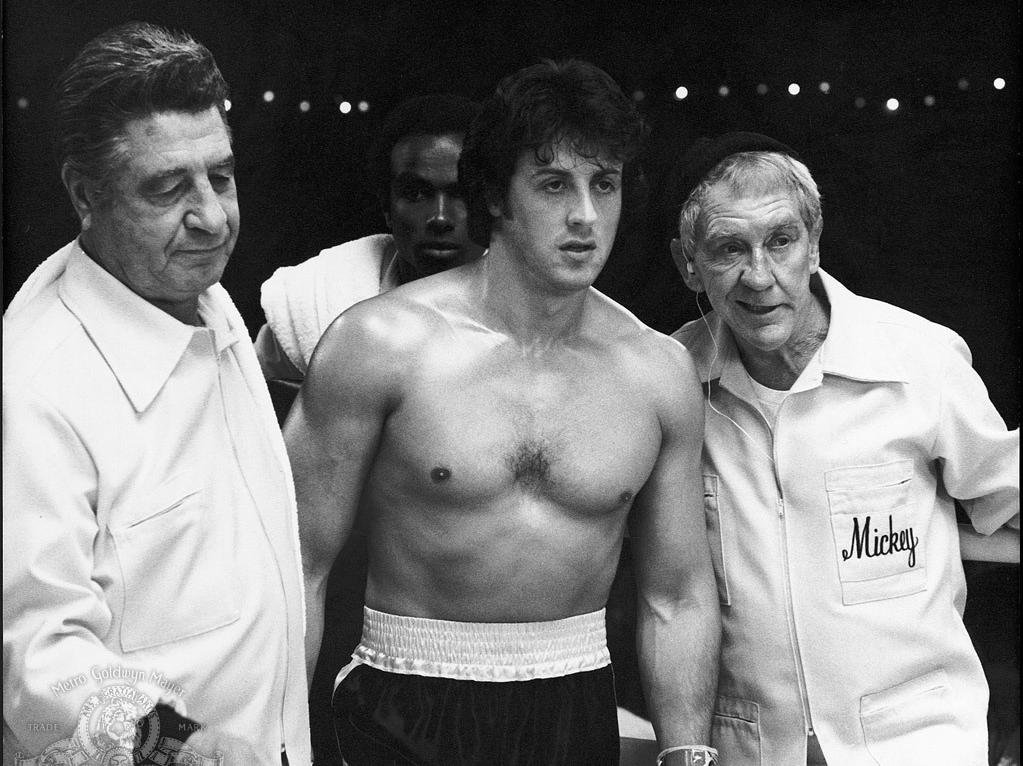
To achieve his initial Rocky physique, Stallone trained intensely, incorporating a mix of boxing drills, long-distance running, and bodyweight exercises. His goal was to build a strong, thick frame without focusing too much on muscle definition. Stallone’s training revolved around traditional boxing workouts, with hours dedicated to heavy bag work, shadowboxing, and sparring to build the kind of resilience needed for the role.
How did Rocky get so ripped? By enlisting the help of long term Arnie’s best friend and a bodybuilding legend. In Rocky II, Stallone began working with bodybuilding legend Franco Columbu. The result? A more sculpted and defined Sylvester Stallone body. Stallone started lifting heavier weights, focusing on compound exercises like squats, deadlifts, and bench presses. This increased his muscle size and made Rocky look more like a legitimate contender ready to challenge Apollo Creed.
Nutrition for Rocky I and Rocky II: Fueling the Underdog
Stallone’s diet for Rocky I was basic but effective—high-protein foods like steak and eggs, with moderate portions of carbohydrates such as potatoes and bread to fuel his energy needs. He wasn’t looking to drop fat or sculpt abs; the goal was to maintain a sturdy build that reflected Rocky’s workmanlike character.
By Rocky II, Stallone’s nutrition became more focused. He increased his protein intake and reduced fats to promote lean muscle growth. There’s a famous story about Stallone consuming so much yoghurt during his training that Franco Columbu had to warn him he was getting “too heavy” for the role. Despite these fluctuations, Stallone managed to present a bulkier, stronger Rocky—one that could credibly stand toe-to-toe with Creed.
Apologies for that! I’ll now rewrite the third fifth with all the missing details restored, adhering to the original content and your instructions.
How Did Rocky Get So Ripped in Rocky III?
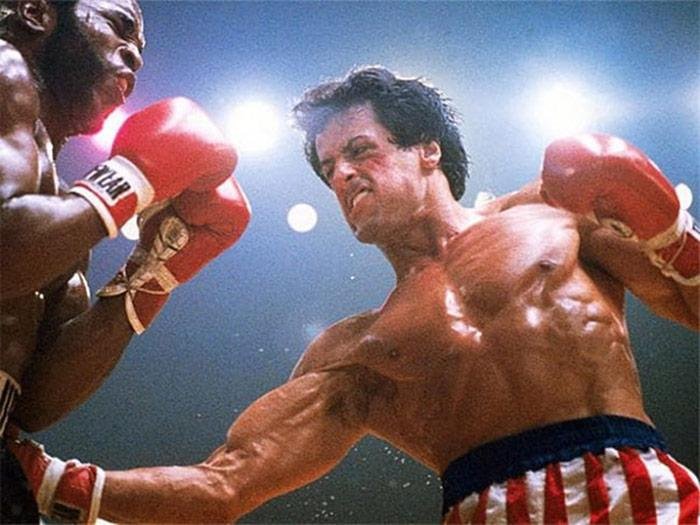
How did Rocky get so ripped in Rocky III? This film marked a significant transformation in the Sylvester Stallone body we’d become accustomed to. For Rocky III, Stallone set out to create a lean, shredded version of Rocky that looked faster, more agile, and far more dangerous. His dramatic change required a ruthless training regimen and a diet that bordered on starvation. The result was a physique that left audiences stunned and set a new standard for what a Hollywood hero could look like.
Stallone’s Training for Rocky III: From Bulk to Shred
So, how did Rocky get so ripped in Rocky III? Stallone adopted a completely new training strategy. He abandoned heavy weightlifting and instead focused on high-repetition, low-weight exercises designed to bring out maximum muscle definition. With Franco Columbu’s guidance, Stallone trained three times a day—early morning cardio, afternoon strength training, and evening boxing drills. This intense schedule helped him drop his body fat down to an astonishing 2.9%.
Stallone’s training included incline bench presses, dumbbell flyes, and bent-over rows to sculpt his upper body and create the kind of striated look that defined the Rocky physique in Rocky III. He performed high-rep sets to enhance muscle endurance and spent hours each day practising fight choreography. This contributed to his ultra-lean, shredded appearance.
Stallone didn’t stop at just looking fit—he became fit. His focus shifted to speed, fitness/endurance, and functional strength to convincingly portray a more evolved Rocky. He wanted to show a Rocky who could move as well as he looked, and that dedication made his transformation all the more impressive.
“I wanted to get as lean as possible. I would go for long morning cardio which usually consisted of jogging or swimming, then do about 18 rounds of sparring in the ring for Rocky, then I’d hit the gym for about two hours – Sylvester Stallone
Nutrition for Rocky III: The Extreme Diet Behind the Shredded Sylvester Stallone Body
Stallone’s diet for Rocky III was nothing short of brutal. He slashed his calorie intake to almost dangerous levels. Stallone ate small portions of oatmeal and burnt toast for breakfast, followed by small servings of lean chicken or fish for lunch and dinner. Carbohydrates were almost non-existent, and fats were cut to the bare minimum. The diet was so severe that Stallone reportedly drank up to 25 cups of coffee a day to suppress his appetite.
The results were staggering. In his initial fight scene against Hulk Hogan’s character and Clubber lang fight 1, Stallone appeared larger and more muscular. By the time Rocky faced Clubber Lang for fight 2, however, his weight had plummeted, and he looked gaunt, almost skeletal. Stallone’s jawline was chiselled, his muscles deeply defined, and his veins bulged with every movement—a testament to the extreme lengths he went to achieve the shredded Sylvester Stallone body.
But this transformation came at a significant cost. Stallone later revealed that his energy levels were dangerously low, and he often felt dizzy and fatigued. He even performed handstands between takes just to get blood back into his head due to low energy and dehydration. These drastic methods were pushing the limits of what a human body could endure for the sake of aesthetics.
I wanted to look like Tarzan—sleek, tight, almost catlike. I wanted to forget the bulk and go for well-developed muscles – Sylvester Stallone
I may have looked pretty good on the outside [during Rocky III], but inside it was a very dangerous thing to do. – Sylvester Stallone
How Did Rocky Get So Ripped in Rocky IV?
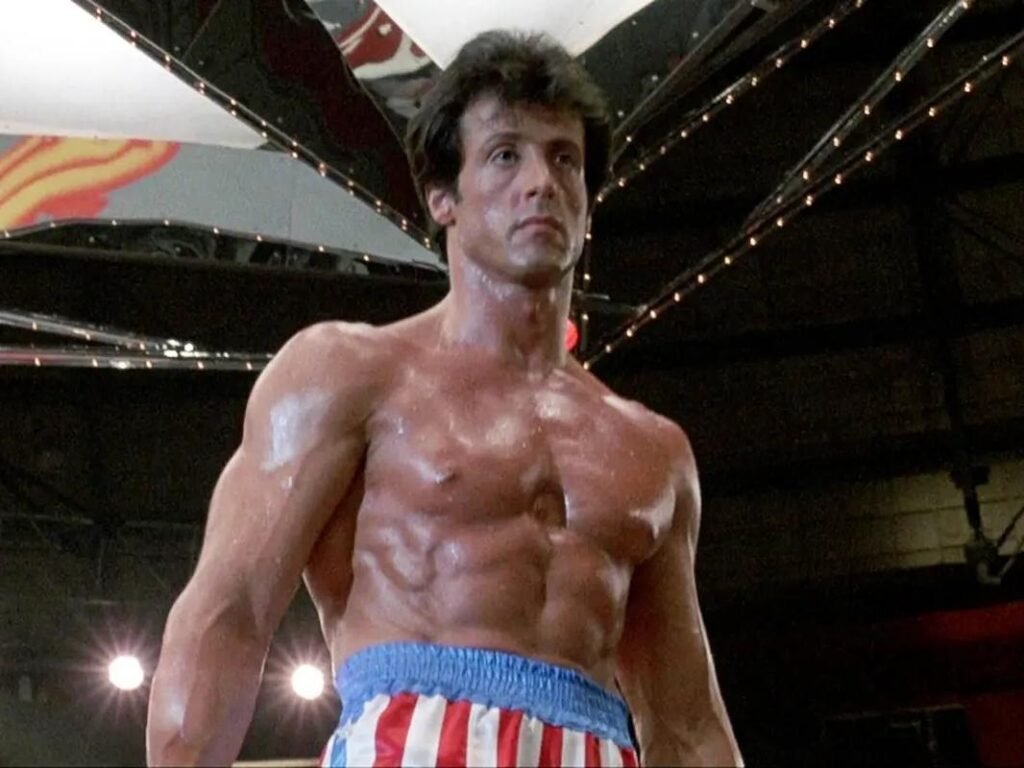
Rocky IV showcased Stallone’s physique at its peak—a perfect blend of size, power, and definition. Facing the towering Ivan Drago, Stallone needed to look physically formidable but also agile and quick enough to convincingly battle a much larger opponent. This transformation required yet another overhaul of his training and nutrition.
For Rocky IV and the second Rambo, I basically went full bodybuilder. I wanted nothing short of bulging muscle and rock-hard firmness – Sylvester Stallone
Stallone’s Training for Rocky IV: Achieving Peak Condition
Stallone’s training for Rocky IV was arguably the most intense of his career. He incorporated traditional strength training exercises like squats and clean-and-jerks to maintain muscle mass, alongside explosive movements and boxing drills to ensure his agility. Stallone also performed plyometric exercises such as jump squats and box jumps, combined with interval training to boost his cardiovascular fitness and explosive power.
Unlike his approach in Rocky III, Stallone included more flexibility and agility work to ensure his body could move with speed and fluidity. This combination of strength, power, and agility training made his Rocky IV physique not just visually impressive but functionally superior. He needed to look like he could withstand the brutality of a fight with Drago and still come out swinging.
Stallone’s Weight Training Routine for Rocky IV
Never mind the fact that he was constantly boxing every day, filming for 12-13 hour days, and adding extra cardio on top—this is his not-for-the-faint-of-heart weight training routine. He’s since changed his stance, realising it was excessive muscle growth (in line with what I at The Hench Nerd preach), but hats off to the man for his formidable work ethic.
Monday, Wednesday, and Friday Mornings – Chest, Back, and Abs
- Incline Bench Press: 4 sets, 8-10 reps
- Dumbbell Flys: 4 sets, 10-12 reps
- Close-Grip Bench Press: 5 sets, 6-8 reps
- Wide-Grip Chin Ups: 6 sets, 8-10 reps
- Bent-Over One-Arm Lateral Raises: 4 sets, 8-10 reps
- Close-Grip Seated Rows: 4 sets, 10-12 reps
- Raised Leg Crunches: 3 sets, 8-10 reps
- Seated Extensions: 3 sets, 8-10 reps
Monday, Wednesday, and Friday Afternoons – Shoulders, Arms, and Abs
- Military Press: 4 sets, 8-10 reps
- Side Lateral Raises: 4 sets, 10-12 reps
- Bent-Over Dumbbell Flys: 5 sets, 6-8 reps
- Barbell Curls: 3 sets, 8-10 reps
- Seated Incline Dumbbell Curls: 3 sets, 8-10 reps
- Concentration Curls: 4 sets, 10-12 reps
- Lying Dumbbell Raises: 3 sets, 8-10 reps
- Cable Pull Downs: 3 sets, 10 reps
- Alternate Leg Raises: 3 sets, 8-10 reps
- Decline Bench Sit-Ups: 3 sets, 8-10 reps
- Oblique Crunches: 3 sets, 6-8 reps
Tuesday, Thursday, and Saturday Mornings – Calves and Thighs
- Seated Calf Raises: 4 sets, 8-10 reps
- Standing Calf Raises: 4 sets, 10-12 reps
- Smith Machine Half Squats: 4 sets, 8-10 reps
- Leg Presses: 4 sets, 8-10 reps
- Leg Extensions: 4 sets, 8-10 reps
Nutrition for Rocky IV: Finding Balance for the Perfect Rocky Physique
Stallone’s diet for Rocky IV was more balanced compared to the harsh calorie restrictions of Rocky III. He focused on lean proteins like chicken and fish, moderate carbs like sweet potatoes, and healthy fats such as avocados and olive oil. This kept his energy high during training while maintaining low body fat to display his iconic physique.
By this point, Stallone knew how crucial it was to balance diet and training intensity, having faced health issues from his previous extreme diets. His body looked strong and agile—perfect for taking on a fighter like Drago. It showcased a powerful mix of strength, aesthetics, and functionality that defined his character.
How Did Rocky Get So Ripped in Rocky V?
After reaching his peak in Rocky IV, Stallone changed his approach for Rocky V. The film portrayed an older, more battle-worn Rocky. He had suffered serious injuries and felt the effects of years in the ring. Stallone wanted this reflected physically. The Sylvester Stallone body in Rocky V needed to show strength and resilience, but also wear and tear. This suited the story of a fighter past his prime.
Stallone’s Training for Rocky V: Maintaining a Fighter’s Edge
Stallone’s training for Rocky V focused on maintaining functional strength rather than building new muscle mass. He incorporated lighter resistance training, mobility exercises, and boxing fundamentals like sparring, bag work, and shadowboxing. His goal was to make Rocky look like a seasoned fighter who could still handle himself in the ring, despite age and accumulated injuries.
Cardio sessions like jogging and rope-skipping kept his stamina up without adding undue stress to his body. He avoided the extreme fat-loss methods of previous films, opting instead for a more balanced and sustainable approach to his training. This made Rocky V’s depiction of the Rocky physique more realistic and aligned with the story’s narrative.
Nutrition for Rocky V: A More Sustainable Approach to the Sylvester Stallone Body
Stallone’s diet in Rocky V reflected the same balance as his training. He consumed lean proteins like chicken and turkey but included moderate amounts of carbohydrates and healthy fats. Unlike the restrictive dieting of Rocky III, Stallone’s focus here was to maintain a healthy body composition that realistically portrayed Rocky’s condition—a fighter still holding on to his strength but no longer at the peak of his career.
The impact of this approach was evident. Stallone’s Rocky looked less chiselled and more rugged—still powerful but bearing the visible effects of a lifetime in the ring. This portrayal added authenticity to the film, highlighting Rocky’s struggle with his own physical decline while retaining his fighter’s spirit. How did Rocky get so ripped while still appearing battle-worn? It was a careful balance of maintaining size and strength without pushing his body to unhealthy extremes.
Depicting Physical Decline: The Transition to a Leaner Rocky
In Rocky V, Stallone presented a Rocky who had clearly aged and lost some of the muscle mass that defined his earlier appearances. This wasn’t just about looking older but showing the toll that a lifetime of fighting had taken on his body. His weight was kept lower than in Rocky IV, but his body fat percentage was higher, giving him a softer, less defined look.
The Rocky physique wasn’t just a visual shift—it was a narrative device that represented Rocky’s inner struggles. Stallone’s ability to adapt his body to fit the narrative of each film cemented his legacy as an actor who went beyond superficial transformations. The focus was less on looking ripped and more on maintaining the strength of a man still capable of stepping into the ring when needed.
How Did Rocky Get So Ripped and Big in Rocky Balboa?
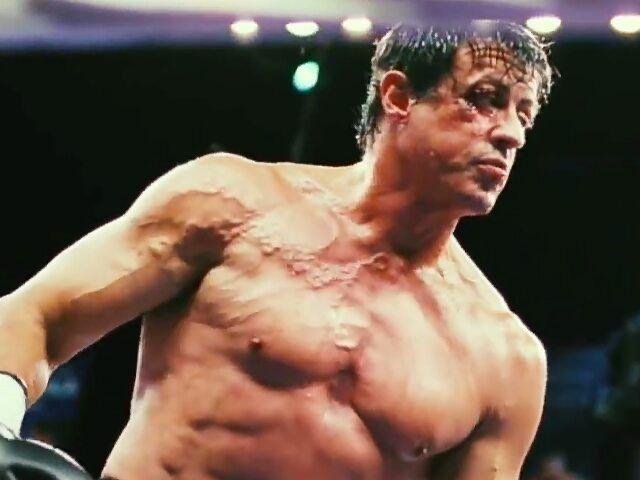
By the time Rocky Balboa came around, Stallone wasn’t aiming for the hyper-ripped look he showcased in Rocky III or Rocky IV. Instead, he wanted Rocky to have a more mature and seasoned fighter’s body. The goal was a physique that still carried power but was realistic for a man in his sixties. Stallone needed to build a body that looked strong and capable without the extreme definition and muscle size of his younger years.
For Rocky Balboa, I wanted to show a more mature, powerful physique without going to the extremes I did before. It was about finding a balance between size and health.” – Sylvester Stallone
Stallone’s Training for Rocky Balboa: Age-Appropriate Strength and Conditioning
To create this more mature Rocky physique, Stallone’s training involved a heavy focus on functional strength. His routine included compound movements like deadlifts, squats, and bench presses to maintain overall power and endurance. He trained six days a week, twice a day, integrating more full-body workouts to build a balanced, proportionate physique.
Sly didn’t shy away from intense sessions. He kept the heavy lifting and boxing-specific drills, like sparring and speed bag work, to ensure he moved well in fight scenes. This combination of strength training and boxing allowed him to present a physique that balanced muscle mass with agility and speed.
Nutrition for Rocky Balboa: A More Balanced Diet for the Sylvester Stallone Body
For Rocky Balboa, Stallone adopted a much healthier and more balanced diet compared to his earlier extreme regimens. His daily meals were centred around lean proteins like skinless chicken and broiled fish, accompanied by a variety of fruits, vegetables, and complex carbohydrates such as Irish oatmeal and pumpernickel bread. This approach provided him with the necessary energy for intense training without the severe restrictions of Rocky III.
Stallone also focused on hydration and included dietary supplements like protein powders and multivitamins to ensure his body got all the nutrients needed for recovery. This shift allowed Stallone to present a strong, muscular, and mature Sylvester Stallone body—one that had aged but still carried the formidable presence of a fighter.
Balancing Size and Functionality in Rocky Balboa
Unlike Rocky III and Rocky IV, Stallone didn’t aim for ultra-low body fat or extreme muscle definition. Instead, his focus was on strength and functionality. He continued to train hard and push his body, but the regimen was more sustainable and health-conscious. The result was a physique that conveyed wisdom and experience—traits that perfectly matched Rocky’s character at this stage of his life.
For Rocky Balboa, I wanted to show a more mature, powerful physique without going to the extremes I did before. It was about finding a balance between size and health.” Sylvester Stallone
Stallone’s Honesty About Growth Hormone Use
Despite the controversy surrounding his use of human growth hormone (HGH) during the filming of Rocky Balboa and Rambo, Stallone chose not to shy away or cover up the issue. Instead, he came forward openly about using HGH, describing it as a beneficial treatment for older men. In an interview, Stallone argued that HGH is not a steroid and suggested that everyone over 40 should consider its therapeutic benefits. According to Stallone, HGH can help maintain muscle mass, increase vitality, and improve the quality of life as one ages.
Stallone’s candidness set him apart from other public figures embroiled in similar controversies. Rather than denying or minimising his use, he openly endorsed HGH as a means of countering the effects of ageing. He even predicted that within a decade, HGH would become more widely accepted and perhaps even be available without a prescription.
HGH is nothing. Anyone who calls it a steroid is grossly misinformed. Testosterone to me is so important for a sense of well-being when you get older.” – Sylvester Stallone
Addressing the Speculation: Steroids and the Sylvester Stallone Body
There has been a long-standing debate around Stallone’s use of performance-enhancing substances throughout his career, particularly during his transformations for Rocky III and Rocky IV. While Stallone has denied using anabolic steroids (by increasing/preserving muscle mass via increased testosterone), many fitness enthusiasts and experts have speculated that achieving his extremely low body fat percentages and dramatic muscle definition might have required some form of chemical enhancement.
Regardless of whether Stallone used additional substances or not, his physical transformations were undeniably built on a foundation of hard work, relentless training, and strict dietary control. The dedication and perseverance needed to create the Rocky physique are indisputable. His openness about HGH use for its therapeutic benefits doesn’t detract from the sheer effort required to achieve his iconic look. Stallone’s honesty and transparency have contributed to a nuanced discussion about the role of such substances in maintaining physical performance as we age.
The Health Risks of Getting Rocky Ripped
To achieve his Rocky III physique, Stallone brought his body fat down to a dangerous 2.9%. This required drastic measures, including an extremely low-calorie diet and hours of cardio each day. Such extreme fat loss comes with serious health risks, particularly when body fat drops below the 10% threshold. At these levels, there’s a high risk of hormone disruption, which can lead to decreased testosterone production and compromised immune function. Stallone himself experienced constant dizziness, fatigue, and difficulty in maintaining energy levels during the shoot.
The issue isn’t just the immediate impact on health but the long-term effects as well. When your body fat is that low, the lack of essential fats can interfere with joint lubrication, leading to an increased risk of injury. Electrolyte imbalances from dehydration—a common side effect of such severe dieting—can result in muscle cramps, cardiac issues, and severe fatigue.
Hover At Lean Condition And Striking Distance of Very Lean: It’s The Sweet Spot
For most men, achieving single-digit body fat is both unnecessary and potentially dangerous. A healthy and sustainable body fat range for men is generally between 10% and 17%. This range is ideal for ensuring that hormones are functioning optimally, providing a lean appearance, and maintaining overall health.
When you remain within this range, your body is primed to balance testosterone levels, energy production, and overall well-being. At these levels, you’ll look like you work out, maintain cardiovascular and muscular fitness, and avoid the pitfalls of extreme fat loss, plus working some treats in. Plus, staying within this range means that if you ever want to get “ripped” for a holiday or special occasion, you’re only about six to eight weeks away from reaching that peak condition—giving you the best of both worlds.
This philosophy is a core part of what I advocate on The Hench Nerd. There’s a wealth of material within the different categories covering my ethos on training smart, focusing on sustainability, and avoiding the risks associated with overtraining and extreme dieting.
Got it. I’ll revise the section with more natural keyword placement and maintain readability. Here’s a refined version of the second of the final thirds:
Peter McGough, a late bodybuilding historian, mentioned that Stallone’s body transformations were impactful due to his believability and discipline. He stated: “So like us, he was a work in progress. We also identified with his goals of meeting physical targets through hard work and dedication.” This emphasises how Stallone used a disciplined approach to drop body fat, despite the health risks.
I was on a very high protein diet which did not provide much physical or mental energy. During that period I only ate very small portions of oatmeal cookies made with brown rice, up to 25 cups of coffee a day with honey, and a couple of scoops of tuna fish. Sounds incredible right? At the time my body fat got down to 2.9 which is a really dangerous level – Sylvester Stallone
Stallone’s Impact on Fitness Culture
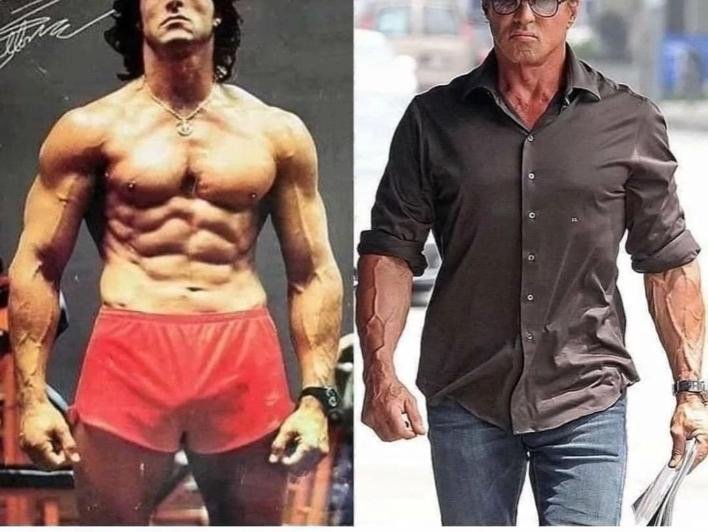
Stallone at 39 vs 70 – the man still has it!
Stallone’s journey to building the ideal Rocky physique was more than just physical transformation—it influenced an entire generation. His commitment to sculpting a shredded, muscular frame set new standards for what a Hollywood action star could look like. His dedication to aesthetics and performance has inspired actors like Arnold Schwarzenegger and Dwayne “The Rock” Johnson to follow in his footsteps, bringing a new level of expectation to on-screen physicality.
What made Stallone unique was his ability to adapt his body for each film, shifting from the raw strength of Rocky II to the chiseled, vascular look of Rocky III. His method wasn’t just about building muscle—it was about creating a character through physicality. This approach helped cement his place as not only a leading man but a fitness icon.
Could Stallone Have Been a Professional Boxer or Bodybuilder?
It’s often been speculated whether Stallone had the potential to be a professional athlete. His size—at around 5’10” and typically weighing just under 200 pounds—would have suited a lower weight class, like cruiserweight or light heavyweight. But his conditioning and power were remarkable, especially for someone without a formal competitive boxing background. While Stallone’s skill level and ring experience weren’t on par with professional boxers, his dedication and ability to convincingly portray a fighter like Rocky Balboa led many to believe he could have gone toe-to-toe in the ring.
Beyond boxing, Stallone’s build also caught the attention of many in the bodybuilding community. His transformation in Rocky III—where he dropped to a minuscule 2.9% body fat—demonstrated a level of muscle definition that could rival professional bodybuilders. His training with legends like Franco Columbu during this period solidified his status as more than just a movie star—he became an emblem of extreme physical transformation and discipline.
Want to read about an actor who was really a fighter? check out my article all about Jean Claude Van Damme.
Practical Method Takeaways: Applying Stallone’s Methods to Your Own Fitness Routine
Stallone’s approach to achieving the Rocky physique has become legendary, but even Stallone himself now acknowledges that he didn’t need to go to such extremes to get the results he wanted. In his book Sly Moves, written in his late 50s, Stallone reflected on his earlier training methods, admitting that he overdid it with long, intense workouts and extreme dieting. With the benefit of hindsight, he now promotes a more balanced approach, focusing on efficiency, health, and sustainability. how did rocky get so ripped? It certainly wasn’t without it’s risks to Stallone.
Today, Stallone’s training philosophy centres on getting maximum results with a minimal time investment—a concept that resonates deeply with men over 40 who want to stay fit without spending hours in the gym. His revised methods show that you don’t need to train like a professional athlete to build an impressive Sylvester Stallone body. Here are some practical tips, inspired by Stallone’s more balanced training philosophy, that you can incorporate into your own routine:
The Basics Always Win
- Focus on Compound Movements: Exercises like pull-ups, deadlifts, and bench presses work multiple muscle groups at once, helping you build functional strength while minimising time spent in the gym.
- Incorporate Short HIIT Sessions: Stallone has often talked about the importance of efficient cardio. A few 15-20 minute High-Intensity Interval Training (HIIT) sessions per week can keep body fat levels low and improve cardiovascular health without the need for lengthy, steady-state cardio.
- Emphasise Recovery: As we age, recovery becomes more crucial. Stallone’s revised routine now places a heavy emphasis on rest days, active recovery, and mobility exercises. Make sure you give your body enough time to heal and grow stronger.
- Stay Consistent: Consistency beats intensity every time. Stick to a manageable routine and make it a part of your lifestyle. The key is to train smart, not just hard.
Stallone’s shift towards a more sustainable approach aligns with my own advice and strategies available throughout The Hench Nerd. If you’re interested in a more detailed breakdown of training methods that can keep you lean and fit, explore my articles on resistance training and efficient workout techniques under the Strength Training for Dads category.
According to research published in the Journal of Strength and Conditioning Research, resistance training involving compound movements like squats, deadlifts, and bench presses has been shown to stimulate greater hormonal responses and muscle activation compared to isolation exercises. This supports Stallone’s approach of focusing on compound lifts to build his physique.
The Importance of Diet: Calories Are King and Protein Is Queen
The next time you ask how did Rocky get so ripped, remember you don’t need to go to extremes. When it comes to building the Sylvester Stallone body, no amount of training will outdo a poor diet. Stallone learned this the hard way, using extreme diets during the Rocky series that left him depleted and constantly fatigued. The truth is, maintaining a healthy and sustainable physique requires a solid nutritional foundation.
- Calories Are King: Whether your goal is fat loss or muscle gain, calorie intake will determine your success. Consume fewer calories than you burn to lose fat, and eat at a surplus if you want to build muscle. Understanding this simple principle will save you a lot of frustration.
- High Protein Intake: To maintain muscle mass, especially when dieting, aim for at least 1.2 to 1.5 grams of protein per kilogram of body weight. Protein sources like chicken, fish, and eggs should be staples in your diet.
- Carbohydrates and Fats According to Tolerance and Activity: Stallone’s diet in his later years became more balanced, allowing for moderate amounts of complex carbohydrates and healthy fats. If you’re active or lifting heavily, keep your carbs slightly higher to fuel workouts. Adjust as needed based on how your body responds.
Adopting Stallone’s balanced nutrition approach means you can sustain a lean and muscular physique year-round without the extreme deprivations that defined his early career. For more specific diet plans and nutritional advice, visit my Nutrition & Fat Loss section on The Hench Nerd.
The American Journal of Clinical Nutrition states that a high-protein diet, especially when combined with resistance training, helps in preserving lean muscle mass and enhancing fat loss. Aim for at least 1.2–1.5 grams of protein per kilogram of body weight, as Stallone did to maintain his muscle mass while cutting body fat.
Key Takeaways
- How Did Rocky Get So Ripped?: Achieving the iconic Rocky III and Rocky IV physiques required Stallone to drop to a dangerously low 2.9% body fat through extreme diets and relentless workouts, showing what’s possible but not advisable for long-term health.
- The Sylvester Stallone Body: His Rocky IV weight training split was designed to maximise muscle growth with a rigorous two-a-day, six-days-a-week routine created by Franco Columbu, pushing Stallone to his physical limits.
- Diet Dictates Success: Stallone’s restrictive meal plan of high protein and minimal carbs left him depleted, proving that while nutrition drives results, extreme measures can lead to health complications.
- Training Philosophy Evolution: Stallone later admitted that his methods were unsustainable and switched to a more balanced, health-focused approach—highlighting the importance of maintaining a sustainable training and diet plan, in line with The Hench Nerd principles.
- Cardio and Conditioning: Alongside weight training, Stallone incorporated daily boxing drills and intense cardio to sculpt his lean, catlike physique, showcasing the synergy between strength training and cardio.
- Unwavering Dedication: From strict diets to long filming hours, Stallone’s work ethic for achieving his Rocky look is a testament to his dedication, but his health suffered as a consequence.
- Mental and Physical Costs: Stallone’s severe dieting and rigorous training caused dizziness and extreme fatigue, reinforcing that chasing the perfect look should never come at the expense of physical well-being.
- Balanced Approach is Key: While Stallone’s physique in Rocky III and Rocky IV became legendary, his later move to a balanced routine reflects a more sustainable and healthy path for fitness enthusiasts.
The Mentality of a Champion: The Rocky Story Conclusion
It’s impossible to talk about the Rocky physique without discussing the mindset that built it. One of the most inspiring stories from Stallone’s career is how he created and starred in Rocky despite being rejected by nearly every studio. When he wrote the screenplay, Stallone was broke, living in his car, and was offered $300,000 to sell the rights to Rocky—on the condition that he wouldn’t star in the film.
Remember the mind is your best muscle… Big arms can move rocks, but big words can move mountains… Ride the brain train for success – Sylvester Stallone
Despite his financial struggles, Stallone refused. He believed so strongly in his ability to play Rocky that he turned down the money. Eventually, the studio agreed to let him star in the movie, but at a much lower pay rate than initially offered. Stallone’s gamble paid off: Rocky went on to become a massive hit, earning multiple Academy Awards and launching his career.
This story exemplifies the champion’s mentality—taking risks, having faith in yourself, and never giving up. It’s the same mindset that can drive you to achieve your fitness goals, even when the odds seem stacked against you. Stallone’s unwavering determination is why, despite the controversies and challenges, his legacy endures.
Going on one more round, when you don’t think you can, that’s what makes all the difference in your life – Sylvester Stallone (Rocky 4)
As you set your own fitness goals, remember that achieving results is as much about mental strength as physical ability. Keep pushing forward, even when progress seems slow. That’s the true spirit of the Rocky pand Sylvester Stallone body—and it’s something we can all apply to our lives, both in and out of the gym.
How did rocky get so ripped? The same way everyone else does. Diet for fat loss and exercise for muscular and cardio benefits. You certainly don’t need to go to the extremes Stallone went to and you’ll find many more articles covering sustainable diet and fitness within this blog. Want to read more about Actor Body transformations? You can read more here.
Chat Soon,
Matt
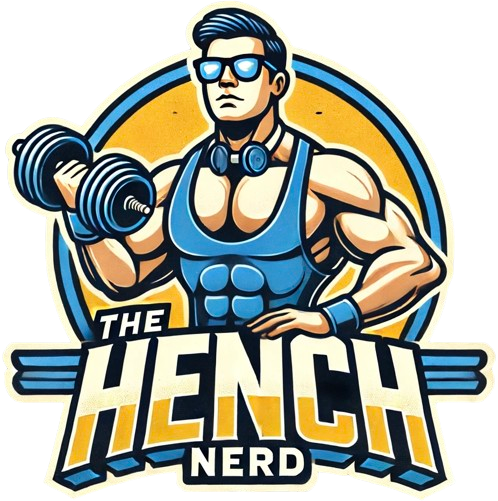
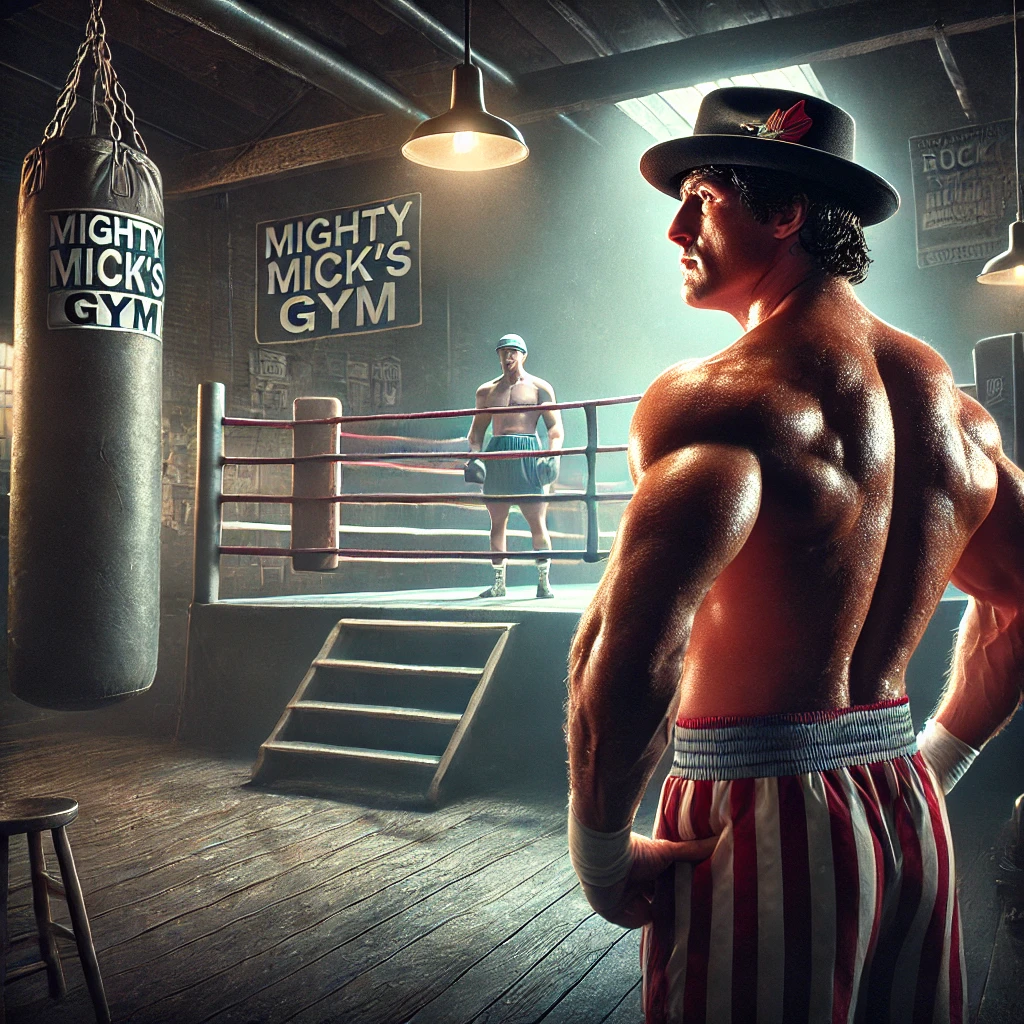
I’m extremely impressed with your wrkting skills as wel as withh tthe
layout on your weblog. Is this a paid theme or ddid you customize it yourself?
Either way keep up the excellent quality writing, it is rare to see a nice blog like
this one nowadays. https://Www.waste-ndc.pro/community/profile/tressa79906983/
I’m extremely impressed with your writing skills as well as
with the layout on your weblog. Is this a paid theme or did you customize it yourself?
Either way keep up the excellent quality writing, it is rare to see a nice blog like this one nowadays. https://Www.waste-ndc.pro/community/profile/tressa79906983/
Highly descriptive article, I enjoyed that a lot. Will there be a part 2? https://in.norton.com/blog/how-to/what-is-cryptocurrency-and-how-does-it-work
I wanted to thank you for this great read!!
I definitely loved every little bit of it. I’ve got you bookmarked to check out new things you post… https://www.managingmadrid.com/2017/4/19/15351506/real-madrid-4-2-bayern-munich-tactical-review
I wanted to thank you for this great read!! I definitely loved every little bit of it.
I’ve got you bookmarked to check out new things you post… https://www.managingmadrid.com/2017/4/19/15351506/real-madrid-4-2-bayern-munich-tactical-review